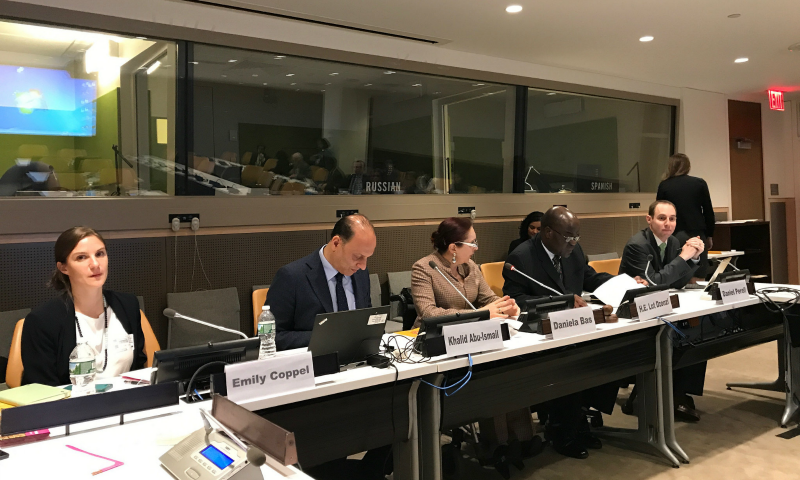
Two thirds of countries in the Arab region rank either high or very high on the Human Development Index (HDI), with 5 out of the 10 best examples of human development progress coming from the Arab region, according to the Human Development Report 2010. However, if we go beyond this conventional HDI narrative of poverty and progress tracking and dig deeper to get to the root causes of poverty and consider regional contexts, the poverty story in the Arab region is very different.
Speaking at a panel discussion organized by UNDESA DSPD and the NGO Committee on Social Development, on the occasion of the 2017 ECOSOC Integration Segment, Dr. Khalid Abu-Ismail (Chief, Economic Development and Poverty Section, Economic Commission for Western Asia) brought attention to the competing narratives that shape poverty eradication strategies. Dr Abu-Ismail highlighted that most poverty eradication strategies are guided by a ‘preconceived conventional narrative’ that emphasises 3 indices of human development: a long and healthy life, access to knowledge and a decent standard of living.
Rethinking human development in the Arab region, Dr Abu-Ismail created a governance index and considered issues of FGM, early pregnancy and overcrowding, in addition to the conventional HDI and discovered that not a single Arab country remained in the high level of development category. When the governance index was added, Arab countries became among the 15 highest ranked development losers.
On rethinking strategies to eradicate poverty, H.E. Lot Dzonzi (Permanent Mission of Malawi to the UN) shared the Malawi experience of the SDGs and the realisation that they needed to transform their strategies from ones dominated by agriculture to those that included innovative programmes such as cash transfers and food for work. To ensure consistency in poverty eradication strategies, Malawi has established a National Commission for Development that will survive beyond the realities of political change.
Emily Coppel from BRAC USA, a development organisation dedicated to eradicating poverty by empowering the poor, explained how BRAC targets the ‘ultra poor’, that is a subset of the extreme poor that are not on government radars such as landless women living in rural settings or those marginalised from communities. Some of the criteria used to identify the ultra-poor includes, dependency upon female domestic work or begging, land ownership, age, number of males working in the household, and children of school age who had to take paid work.
What are the implications of these diverse approaches to poverty? Depending on what indicators considered most appropriate to inform poverty eradication strategies and progress reports, the story of poverty is very different. How can we make sure that no one is left behind? As Ms Daniela Bas (Director, UNDESA DSPD) reiterated in her opening remarks, the 2030 Agenda for Sustainable Development demands the universal inclusion of the most vulnerable groups and accountability of Member States.
In order to achieve the ambitious 2030 Agenda, including the 17 Sustainable Development Goals, perhaps national and international policymakers need to rethink the narratives that inform poverty eradication strategies, choosing to dig deeper for root causes and regional contexts, over business as usual which indicates progress but does not always reveal the full story. As 2030 approaches this change in thinking is necessary to ensure that poverty is not only eradicated but that future generations are protected from experiencing poverty, and that no one, including those invisible in current strategies, is left behind.
Learn more about the Division's work on poverty eradication.
Source: UNDESA DSPD
 Welcome to the United Nations
Welcome to the United Nations